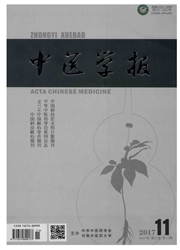

 中文摘要:
中文摘要:
目的:探讨aAd-p53注射液靶向灌注治疗癌性胸腹水的临床疗效和安全性。方法:选择2012年5月-2014年2月在我院接受治疗的癌性胸腹水患者80例,根据治疗方法的不同,将患者随机分为研究组和对照组,每组40例。研究组患者采用腔内灌注rAd-p53治疗,对照组患者采用表阿霉素灌注治疗,观察并比较两组患者的治疗总有效率、不良反应的发生率及KPS功能评分的变化情况。结果:所有患者均顺利完成灌注治疗,病情获得好转,生存质量得到改善。研究组和对照组的治疗总有效率分别为70%、67.5%,两组比较无显著性差异(P〉0.05)。两组治疗后KPS评分均显著高于治疗前,且研究组高于对照组,差异具有统计学意义(P〈0.05)。研究组和对照组不良反应的发生率分别为20%和25%,研究组低于对照组,但两组差异并无统计学意义(P〉0.05)。结论:rAd-p53注射液靶向灌注治疗是一种治疗癌性胸腹水安全有效的方法,值得临床推广。
 英文摘要:
英文摘要:
Objective: To investigate the clinical effect and safety of aAd-p53 gene targeted infusion therapy on malignant pleural effusion and ascites. Methods: 80 patients with malignant pleural effusion and ascites who were treated in our hospital from May 2012 to February 2014 were selected and randomly divided into the study group and the control group according to different treatment methods.The patients in the study group were treated by rAd-p53, while the patients in control group were treated by adriamycin. Then the clinical efficacy, the incidence of adverse reactions and the changes of KPS were observed and compared between the two groups. Results: All patients successfully completed the infusion treatment. There was no statistically significant difference in the clinical efficacy between the two groups(P〉0.05). After the treatment, the KPS scores of patients in both groups were higher than those before treatment, and the KPS score of study group was statistically higher than that of the control group(P〈0.05). The incidence of adverse reactions of patients in the study group was lower than that of the control group,but no statistically significant difference was found between the two groups(P〈0.05). Conclusion: The aAd-p53 gene targeted infusion therapy was a safe and effective method for the malignant pleural effusion and ascites, and it is worthy of clinical promotion.
 同期刊论文项目
同期刊论文项目
 同项目期刊论文
同项目期刊论文
 Gambogic acid, a potent inhibitor of survivin, reverses docetaxel resistance in gastric cancer cells
Gambogic acid, a potent inhibitor of survivin, reverses docetaxel resistance in gastric cancer cells Enhanced efficiency of thermally targeted taxanes delivery in a human xenograft model of gastric can
Enhanced efficiency of thermally targeted taxanes delivery in a human xenograft model of gastric can 期刊信息
期刊信息
